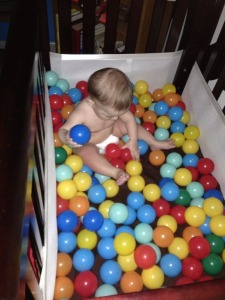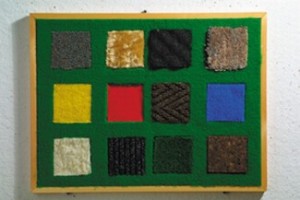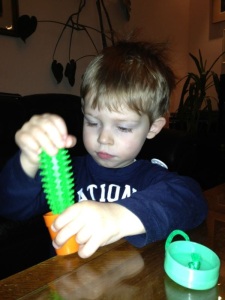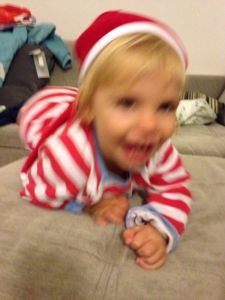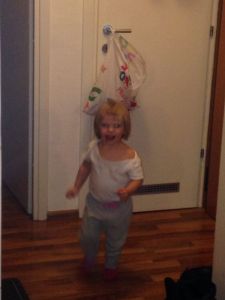A cranky baby? – behind the scene
- “My baby cries a lot.”
- “My baby doesn’t want to eat (solids).”
- “My baby doesn’t like to get dressed.”
- “It’s impossible to put my baby to sleep.”
- “My baby doesn’t like to ride in a car.”
- “My baby doesn’t like to spend time on her tummy.”
All of these are frequent examples of children’s reactions to sensory stimuli from the environment. To explain it a little bit: there may be many reasons for a baby to cry constantly or not to be able to sleep and it is up to us to find a pattern in the activities that preceded the negative reactions: e.g. bathing, dressing, feeding, going out in the sun etc. It can also be a reaction to an absence of a stimulus. For example: a baby or a child will not be able to fall asleep until he or she gets enough of proprioceptive stimuli (e.g. when we tightly hold the baby in hands). Children who have some oral motor and sensory difficulties will most likely have difficulties breastfeeding (sucking) or will have difficulties chewing their food, especially the solid, chewy items. Also, they might be irritated by the smell or the texture of the food. Furthermore, if a baby is hypersensitive to touch, she might cry while you try changing her clothes and might even be bothered by the etiquette or different materials in her clothes. Children who are hypersensitive to the vestibular stimuli most likely will not enjoy the car rides, while the children on the opposite side of the spectrum love the rides, swinging, walking on a beam (or couch armrest) and other unstable surfaces. Concerning the tummy time, if a child has a vestibular problem, they will probably not want to have their heads in a position towards the floor. If they have low muscle tone, they might have an issue holding their heads up or they might have a problem with their shoulder girdle.
Let me make this more clean with an example of a boy I worked with. He was 9 months old when he came to me and the reason his mom brought him was that he did not sit by himself. So, in our first meeting, I put the boy down on a mat and waited to see his spontaneous movements, reactions and motor skills. He did not want to turn to his tummy. I tried using the toys to get him to turn and stay like that, but he would immediately start to cry very intensely. Putting him into a side sitting position also scared him a bit and he would continue to cry. He didn’t even want to have his fists on the ground in front of himself. But, while he was on his back, he would hold a toy in his hands. After getting to know his motor skills, I took a look at his sensory profile since children until the age of 7 are very sensory oriented. I noticed this boy was hypersensitive to tactile stimuli on his fists and that was the reason he was not using the side sitting. The boy did not want to put his hands onto the floor which prevented him from getting and being in this position. Also, he did not want to have his head face the floor. While on the tummy or on all fours where head needs to be in that position tell us there might have been some vestibular difficulty. The vestibular system gives us information about the head position. When I realized what his sensory difficulties were, I started working with him on a swing – we would swing forward-backward as the linear swinging regulated him.This way we worked and played without any tears.
It is important to know what preceded some negative reaction your child had and look at the situation through sensory glasses. For example, if your child doesn’t like to get dressed and you only manage to put some clothes onto your baby while somebody is holding her or singing, take it as a clue that your baby needs more proprioceptive or auditory stimuli to get regulated. You can give your baby some deep pressures all around his body, especially the joints as if you were trying to reach their bones. Do not squeeze your baby or pinch or lightly caress, just give deep and relaxing pressure with your whole palm. Then, try to get your baby dressed. Any difference in his or her behavior now? If not, check if your baby has a preference in materials and textures or is she or he bothered by the etiquette on the clothes or if the clothes are too cold (after giving a warm bath, clothes can sometimes appear cold).
